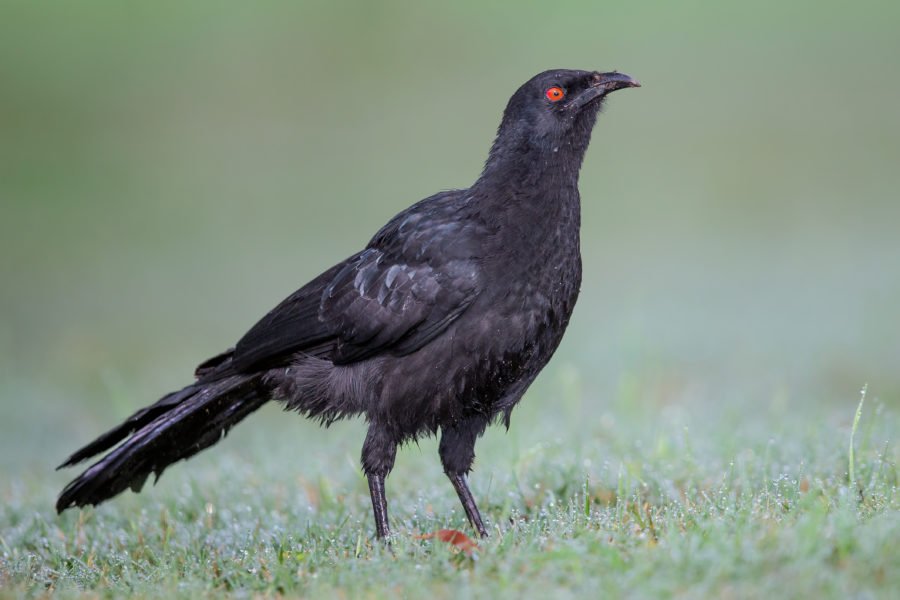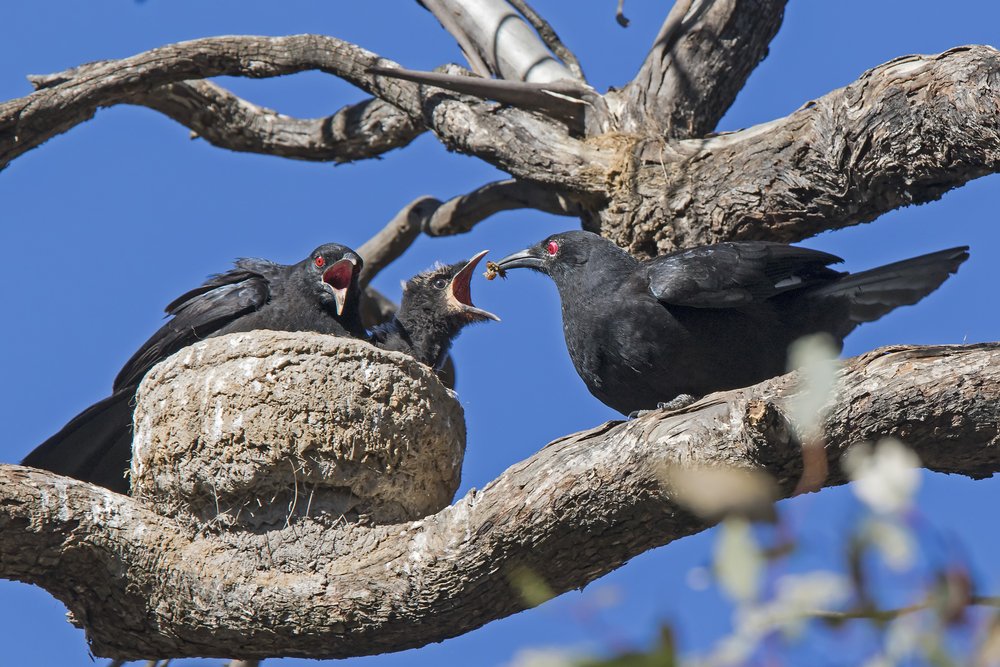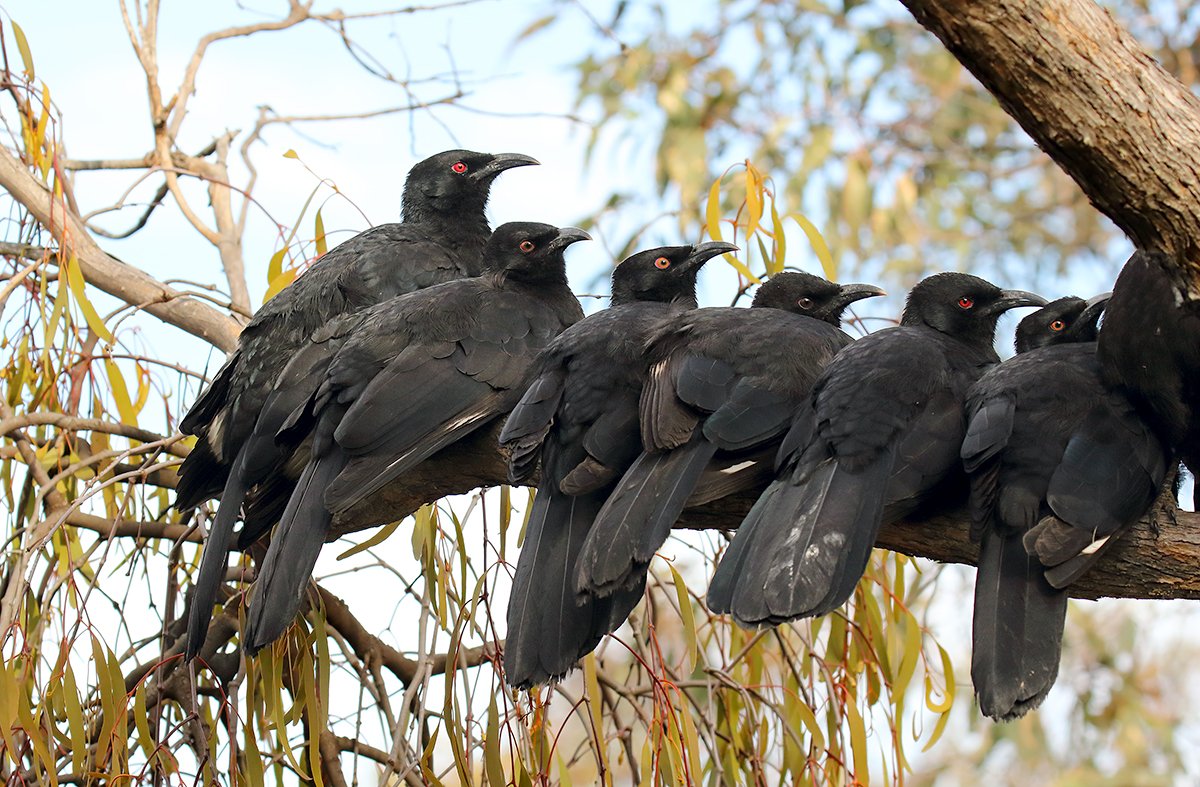Don’t call it a crow: meet the white-winged chough

Bec Crew
Bec Crew

Endemic to southern and eastern Australia, the white-winged chough can be found in open forests and woodlands – especially where it’s damp and a little muddy.
White-winged choughs (Corcorax melanorhamphos) are known for their meticulously constructed mud nests, which they build over several days using leaf litter and soft grasses, held together in a perfect cup shape with mud, or sometimes manure.
These nests would be the envy of birds everywhere (if birds knew how to be jealous), because of how structurally sound they are. They’re so sturdy, they can be reused for multiple egg clutches, and they can even hold these pretty hefty-looking babies:

The white-winged chough is one of just two known members of the Australian mudnesters family Corcoracidae. The other, the apostlebird (Struthidea cinerea), shares its highly social behaviours.
Both birds love hanging out in large flocks of up to 20 individuals – most often consisting of a breeding pair and several generations of offspring.
If you encounter a white-winged chough, there’s a good chance you’ll find it with a bunch of its relatives, grazing for worms and insects on the forest floor or cuddling up to each other on a tree branch, just like apostlebirds.

Social groups of white-winged choughs can become so tight-knit, they might even kidnap the fledglings of other families to bolster their numbers of future babysitters.
Interestingly, these large family groups seem to have the same sorts of squabbles that we humans do. A study by researchers at the Australian National University in Canberra found that the grown siblings would sometimes pretend to feed their baby brothers and sisters, but steal the food for themselves – sometimes right out of their mouths.
Fortunately for the hungry chicks, these sneaky birds tended to relatively young, and while they weren’t particularly helpful with the feeding, they were much better at preening duties.
Here you can see the (very relatable) family dynamic of the white-winged choughs:

